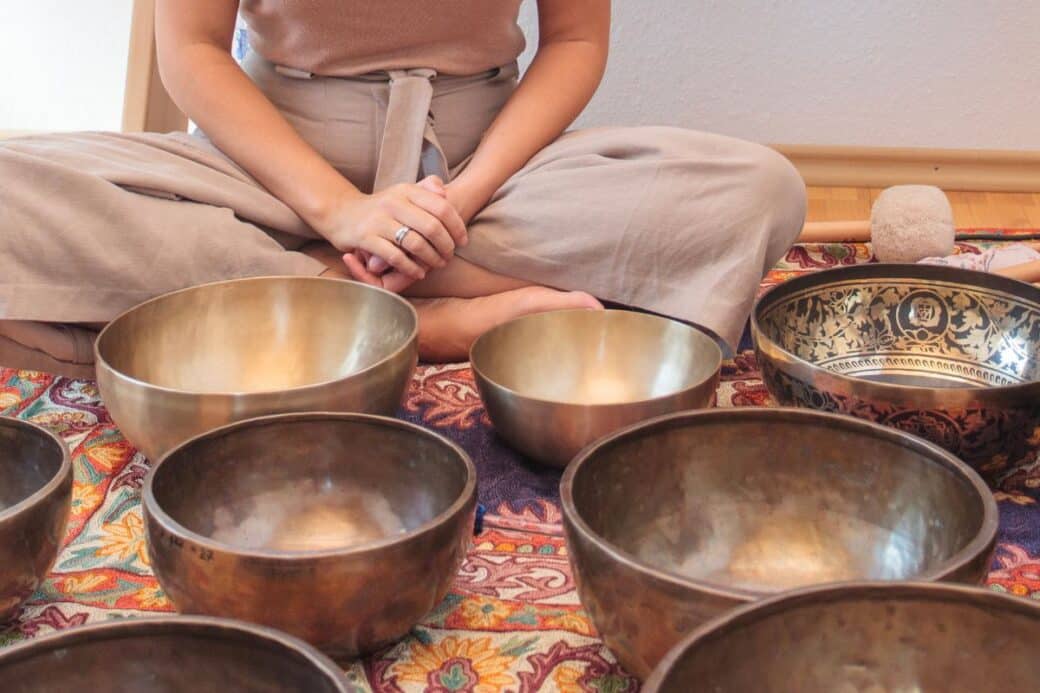Have you ever wondered if singing bowls are considered haram in Islam? In this article, we will explore the topic of faith and its relationship with singing bowls. Many people are drawn to the soothing sounds and spiritual vibrations of these ancient instruments, but it is important to understand their compatibility with religious beliefs. Join us as we delve into the religious perspectives on singing bowls and uncover the truth behind the question: are singing bowls haram?

Are Singing Bowls Haram: Understanding the Concept of Haram
Definition of Haram
Haram is a term that originates from Arabic and is commonly used in Islamic teachings. It is often translated to mean “forbidden” or “prohibited.” In the context of religion, it refers to actions, practices, or objects that are deemed morally or religiously unacceptable by Islamic teachings. Understanding what is categorized as haram is crucial for Muslims as it helps guide their daily lives and ensures adherence to the principles of Islam.
Haram in Quranic Context
The concept of haram is deeply rooted in the teachings of the Quran, which is considered the holy book of Islam. The Quran serves as the main source of guidance for Muslims, providing instructions on various aspects of life. It highlights actions that are considered haram, emphasizing the importance of adhering to the teachings of Islam. The Quranic context of haram provides Muslims with a clear understanding of what activities or practices they should avoid in order to lead a righteous and pious life.
Understanding Haram in Daily Life
The concept of haram extends beyond religious rituals and encompasses various aspects of daily life. Muslims strive to align their thoughts, actions, and intentions in accordance with the teachings of Islam. This includes avoiding haram activities such as consuming alcohol and pork, engaging in dishonesty and theft, and participating in activities that promote violence or harm. By understanding the scope of haram in daily life, individuals can make informed choices and ensure that their actions are in line with their faith.
Introduction to Singing Bowls
Origin and History of Singing Bowls
Singing bowls have a rich history that dates back centuries. The precise origin of these bowls is unclear, but they are believed to have originated in the Himalayan regions of Tibet, Nepal, and India. Traditionally, they were made from a combination of metals, including copper, tin, zinc, and iron. These bowls were primarily used by Buddhist monks for meditation purposes and were valued for their unique sound and resonance.
Traditional Usage of Singing Bowls
In their traditional context, singing bowls were primarily used in religious and spiritual practices. Buddhist monks would play the bowls during meditation sessions to create a calming and peaceful atmosphere. The resonating sound produced by the bowls was believed to enhance concentration and aid in achieving a heightened state of awareness. Singing bowls were also used during religious ceremonies and rituals as a means of invoking divine energies and promoting spiritual well-being.
Contemporary Use of Singing Bowls
In recent years, singing bowls have gained popularity beyond their traditional usage. People from various cultures and religious backgrounds have embraced the therapeutic and healing properties associated with these bowls. Apart from meditation, singing bowls are now utilized in yoga practices, holistic healing therapies, and mindfulness exercises. Their soothing tones and vibrations are believed to alleviate stress, promote relaxation, and restore emotional balance. While the traditional use of singing bowls remains prevalent, their contemporary application has extended to non-religious and secular settings.

Understanding the Quranic Perspective
Opinions on Singing Bowls from Scholarly Interpretations
Scholars have expressed differing opinions regarding the use of singing bowls within an Islamic context. Some argue that any use of singing bowls should be regarded as haram, as their association with non-Islamic beliefs and practices may conflict with the principles of monotheism in Islam. Others maintain that as long as the intention behind the use of singing bowls is for peaceful and mindful purposes, it may be permissible within Islamic teachings. This difference in scholarly interpretations reflects the complexity of navigating cultural practices within a religious framework.
Examining Relevant Quranic Passages
The Quran does not explicitly mention singing bowls, making it challenging to derive a clear verdict on their permissibility. However, Islamic teachings emphasize the importance of intention and avoiding association with practices that contradict the principles of monotheism. Muslims are encouraged to reflect on the various interpretations of relevant Quranic passages in order to form their own understanding of the permissibility of singing bowls within an Islamic context.
Interactions of Islam with Other Cultures and Practices
Throughout history, Islam has interacted with diverse cultures and practices. This interaction has led to the absorption and adaptation of certain practices and beliefs into Islamic traditions. However, there continues to be ongoing debate and divergence of opinion within the Muslim community regarding the compatibility of certain practices, such as the use of singing bowls, with Islamic teachings. Understanding the historical interactions between Islam and other cultures can shed light on the diverse perspectives surrounding singing bowls within the Islamic faith.
Haram and the Non-Essentials of Worship
Haram and Non-Islamic Ritualistic Practices
Islam places great emphasis on monotheism and discourages the adoption of ritualistic practices that are not rooted in Islamic teachings. Haram practices often encompass activities that involve polytheism or idolatry, as these contradict the fundamental belief in the oneness of Allah. Non-Islamic ritualistic practices, including the use of singing bowls, may be considered haram by some scholars due to their potential association with polytheistic beliefs and practices.
Distinction between Cultural Practices and Religious Beliefs
It is important to distinguish between cultural practices and religious beliefs when evaluating the permissibility of certain actions within Islam. Singing bowls, although associated with specific cultural and religious practices, may not necessarily be considered integral to the Islamic faith. Recognizing the distinction between cultural practices and religious beliefs allows individuals to assess the permissibility of using singing bowls based on their personal understanding and interpretation of Islamic teachings.
Interpretations of Haram in Terms of Objects of Worship
The concept of haram also extends to objects of worship and their association with other faiths or practices. Muslims are advised against engaging with objects of worship or rituals that are not aligned with Islamic teachings. When it comes to singing bowls, differing interpretations exist regarding whether they can be classified as objects of worship. Some argue that the sound and vibrations produced by the bowls may be considered part of a spiritual experience, while others view them solely as cultural artifacts. These varying interpretations contribute to the ongoing discussion surrounding the permissibility of singing bowls in an Islamic context.
The Link between Singing Bowls and Worship
Singing Bowls as Cultural Artifacts
Singing bowls hold significant cultural value, particularly in the regions where they originated. They represent centuries-old traditions and are treasured as cultural artifacts. Singing bowls serve as a testament to the artistic craftsmanship of the communities that created them and are highly regarded for their cultural heritage. Recognizing singing bowls primarily as cultural artifacts rather than objects of worship allows for a broader understanding of their significance and potential role within Islamic practices.
Singing Bowls as Objects of Worship
While singing bowls are predominantly seen as cultural artifacts, there are instances where they are recognized as objects of worship. People from different traditions and belief systems may perceive singing bowls as having spiritual power or the ability to invoke divine energy. In some practices, singing bowls are used in conjunction with specific rituals and prayers. When exploring the link between singing bowls and worship, it becomes necessary to assess the intention and context in which they are used and how this aligns with Islamic teachings.
Potential Conflicts between Islamic Beliefs and Singing Bowl Practices
For some Muslims, the use of singing bowls may raise concerns about potential conflicts with Islamic beliefs and practices. The association of singing bowls with non-Islamic religious or spiritual practices may be seen as contradictory to the principles of monotheism and the exclusive worship of Allah. The potential conflicts between Islamic beliefs and singing bowl practices are central to the ongoing debate surrounding their permissibility within the Islamic faith.
Exploring Differing Opinions on Singing Bowls
Diverse Islamic Perspectives on Singing Bowls
Within the Islamic faith, there is a range of perspectives regarding the permissibility of using singing bowls. Some Muslims argue that any association with non-Islamic practices should be strictly avoided, deeming the use of singing bowls as haram. Others adopt a more flexible approach, considering the intention and purpose behind using singing bowls as crucial factors in determining their permissibility. The diversity of Islamic perspectives on singing bowls reflects the unique interpretations and understandings of individuals within the broader Muslim community.
Criticisms against the Use of Singing Bowls in Islamic Context
Critics of the use of singing bowls within an Islamic context often voice concerns about potential associations with polytheistic or idolatrous practices. They argue that the sounds and vibrations produced by the bowls may inadvertently lead to the worship of other entities, thereby contradicting the core principles of Islam. The criticisms against the use of singing bowls highlight the need for careful consideration of the ramifications and potential conflicts with Islamic beliefs.
Defenses for the Use of Singing Bowls
Supporters of the use of singing bowls argue that their purpose extends beyond religious or spiritual domains. They emphasize the therapeutic and healing properties associated with singing bowls and argue that their use can be separate from any religious connotations. Furthermore, proponents suggest that incorporating elements from other cultures and practices can promote understanding and harmony among diverse communities, fostering a sense of unity rather than conflict. Defenses for the use of singing bowls within an Islamic context bring to light the potential benefits and opportunities for interfaith dialogue.
Singing Bowls in Non-Islamic Traditions
Singing Bowls in Buddhism
Singing bowls have a significant presence in Buddhist traditions. They have historically been used in meditation practices to create a serene and focused environment. Buddhists believe that the sound and vibrations produced by the bowls aid in relaxation and mindfulness, helping individuals deepen their spiritual experiences. Understanding the association of singing bowls with Buddhism allows for a broader understanding of their cultural and religious significance.
Singing Bowls in Hinduism
In Hinduism, singing bowls are often associated with yoga practices and spiritual ceremonies. The resonating sound of the bowls is believed to awaken and align the chakras, energy centers within the body. Singing bowls play a significant role in Hindu rituals and are considered sacred objects that facilitate spiritual growth and self-awareness. Recognizing the connection between singing bowls and Hinduism provides valuable insight into their religious importance in Hindu traditions.
Singing Bowls in Western New Age Practices
In Western cultures, singing bowls have gained popularity within the sphere of New Age practices. They are often utilized in holistic healing therapies, sound therapy sessions, and mindfulness exercises. Singing bowls are embraced for their calming and soothing effects on the mind and body. By exploring singing bowls in the context of Western New Age practices, we can understand their evolving use and how they have transcended cultural and religious boundaries.
Interfaith Dialogues on Singing Bowls
Interfaith Views on Singing Bowls
Interfaith dialogue plays a crucial role in promoting mutual understanding and harmony among different religious communities. When discussing the permissibility of singing bowls, engaging in interfaith conversations allows for a diverse range of perspectives to be heard. Various religious groups may hold different views on the use of singing bowls based on their unique beliefs and practices. Interfaith views on singing bowls provide valuable insights into the perceptions and interactions between different faith traditions.
Examples of Harmonious Interfaith Discussions about Singing Bowls
Harmonious interfaith discussions regarding the use of singing bowls demonstrate the potential for respectful engagement and understanding among different religious communities. By coming together to explore shared values and commonalities, individuals from diverse backgrounds can foster a sense of coexistence and strengthen interfaith relations. Such discussions highlight the importance of finding common ground while respecting the differences in perspectives on the permissibility of using singing bowls.
How Interfaith Dialogues Can Contribute to an Understanding of Haram
Interfaith dialogues can offer valuable insights into the concept of haram and its application within different faith traditions. By engaging in respectful conversations, individuals can gain a deeper appreciation for the diversity of religious beliefs and practices. Interfaith dialogues contribute to a nuanced understanding of the concept of haram by recognizing the complexities of navigating cultural practices and beliefs within a religious framework.
Practical Considerations for Muslims using Singing Bowls
Is there a Right or Wrong Answer?
Determining whether the use of singing bowls is permissible within Islam is a complex question that does not necessarily have a definitive right or wrong answer. The diversity of interpretations and opinions within the Muslim community underscores the subjective nature of the issue. Ultimately, individual Muslims must consider their own understanding of Islamic teachings, their intentions behind using singing bowls, and seek guidance from Islamic scholars to make an informed decision.
Perspectives from Islamic Scholars
Seeking guidance from Islamic scholars is a crucial step in addressing questions about the permissibility of using singing bowls. Scholars provide insights based on their extensive knowledge of Islamic teachings, allowing individuals to make informed decisions in accordance with their faith. It is essential to engage in open and respectful discussions with scholars to better understand the various perspectives and insights they may offer regarding singing bowls.
Personal Interpretation and Decision-Making
Personal interpretation and decision-making play an integral role in navigating religious teachings and practices. Each individual is responsible for seeking knowledge, understanding, and reflecting on their own beliefs and values. When it comes to using singing bowls, Muslims must carefully weigh the various opinions, cultural contexts, and potential conflicts with Islamic teachings. Personal interpretation and decision-making ensure that individuals have a clear understanding of their own faith and align their actions accordingly.
Conclusion: Singing Bowls and Haram
Summary of Arguments and Perspectives
The discussions surrounding the permissibility of using singing bowls within an Islamic framework have revealed a multitude of arguments and perspectives. Scholars and individuals within the Muslim community hold differing opinions, with some deeming singing bowls as haram due to potential associations with non-Islamic practices, while others argue for their permissibility based on intention and cultural significance. Recognizing the variety of arguments and perspectives ensures a comprehensive understanding of the topic.
Implications for the Use of Singing Bowls amongst Muslims
The implications of using singing bowls amongst Muslims are deeply personal and shaped by individual beliefs, cultural contexts, and theological interpretations. It is essential for Muslims to carefully reflect on the potential conflicts, benefits, and cultural significance of singing bowls within the context of their own faith. By considering the implications, Muslims can navigate this complex issue in a manner that aligns with their personal understanding of Islam.
Remaining Questions and Areas for Further Exploration
While this article has discussed various aspects of the permissibility of singing bowls within Islam, there are still remaining questions and areas for further exploration. The ongoing debates within the Muslim community highlight the need for continued dialogue, research, and nuanced discussions surrounding singing bowls and their compatibility with Islamic teachings. By addressing these remaining questions, individuals and communities can continue to deepen their understanding of faith and foster greater respect and understanding among diverse religious traditions.



